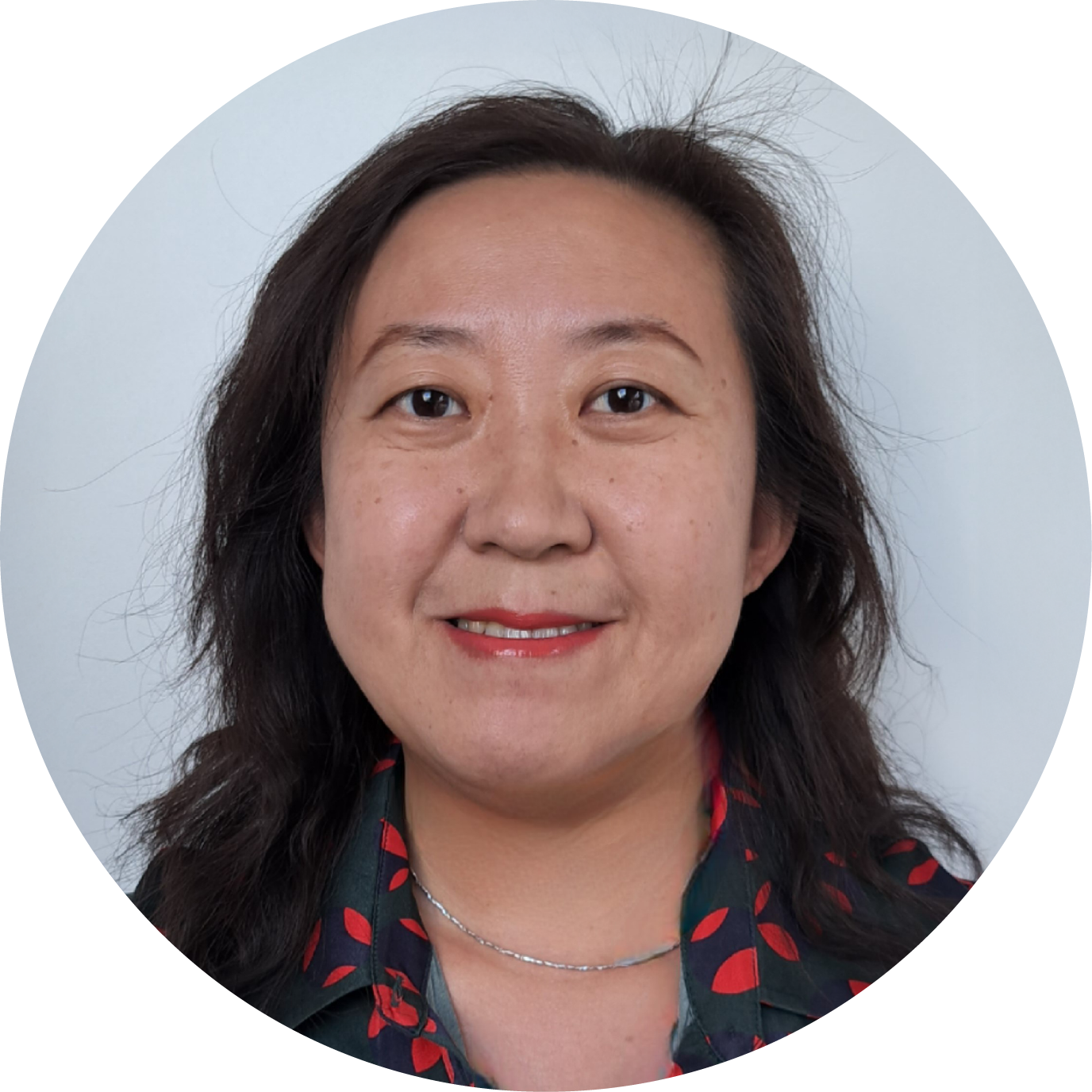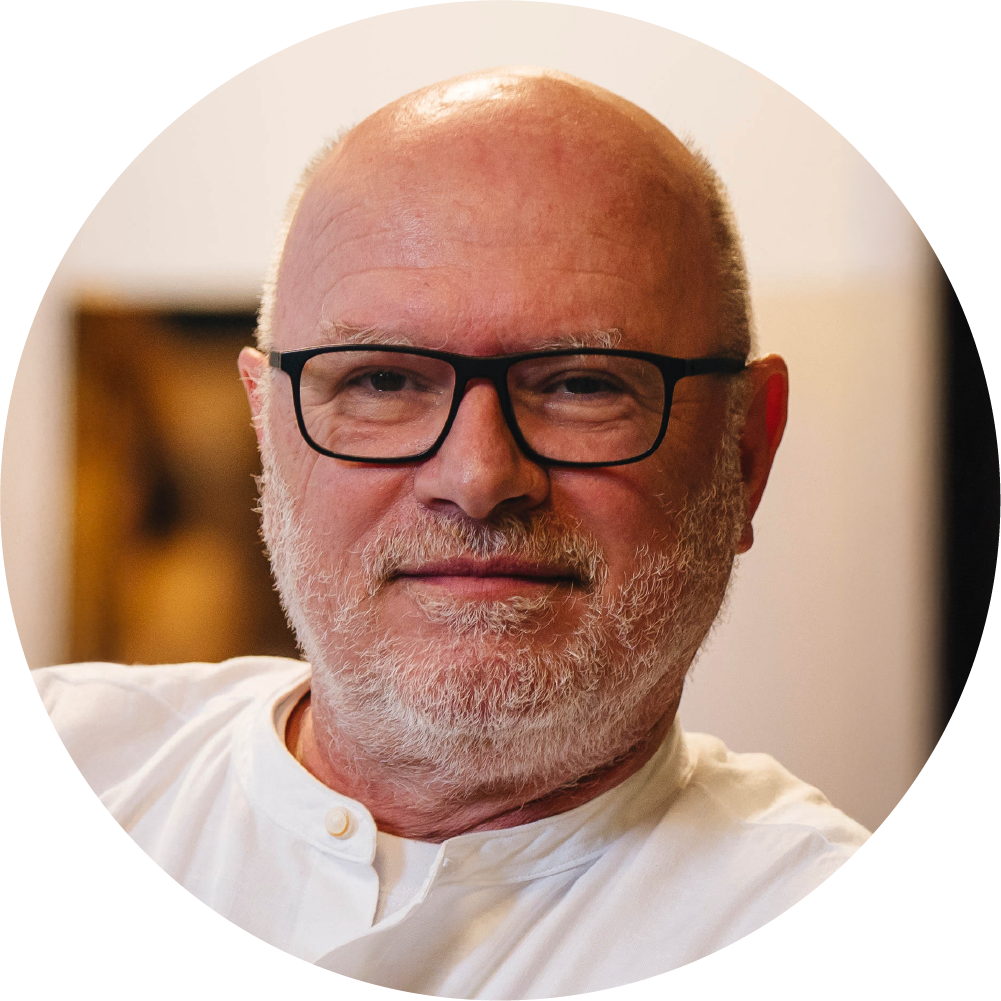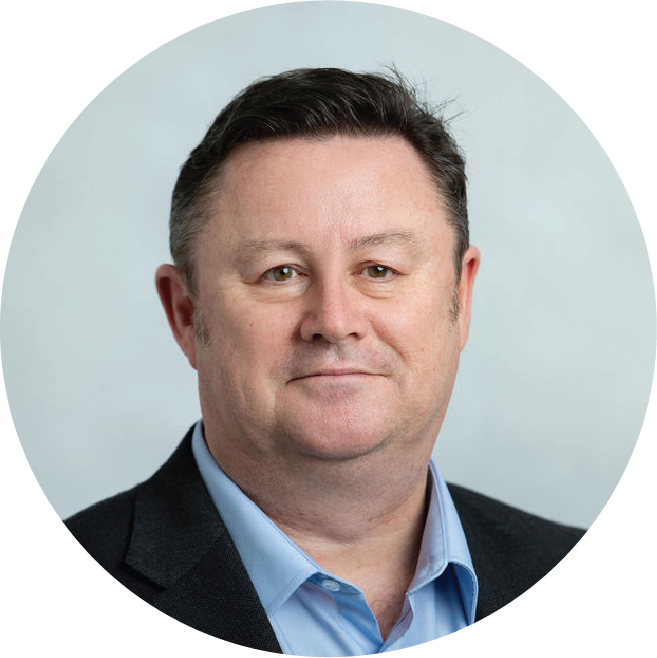![]()
From small molecules to sequences: prepare for a new discovery landscape
Scientific Conference and User Group Meeting
Frankfurt, Germany
4-5th November, 2025
What is Certainty Discovery
Join us for the latest Certainty customer summit: Certainty Discovery. This two-day event showcases the combined expertise of Certara, Chemaxon, and their global community of customers, empowering scientists and research informaticians to achieve greater certainty in drug discovery.
Day 1 features a scientific conference with renowned industry speakers discussing the impact of new modalities on therapy discovery.
Day 2 focuses on practical solutions offered by our discovery software suite, including D360, Certara AI, Design Hub, Compound Registration and Marvin. Don’t miss this opportunity to advance your research!
Why join?

Prepare for New Modalities
Learn successful strategies for navigating the informatics challenges posed by sequence-based modalities.

Explore New Technologies
Discover our combined capabilities and future vision, including the application of deep learning to text search, optical structure recognition, property prediction model retraining, and more. Discuss how our experts can support you.

Network with Peers
Connect with fellow Certara and Chemaxon customers who share your passion for drug discovery.
Speakers

Filip Miljkovic
AstraZeneca

Nathan Brown
Independent Consultant

Xin Zhang
Cellarity

Shijun Yu
Roche

Miklos Feher
X-Chem

Claire Bellamy
Pfizer

John Cumming
Roche

Sameh Eid
Merck

Thomas Fox
Boehringer Ingelheim

Gian Marco Ghiandoni
AstraZeneca

Farah Egby
The Pistoia Alliance

Matthias Gehringer
Eberhard Karls University

Robert Aspbury
Certara

Michael Hofmann
Merck KGaA

William McCoull
AstraZeneca

David Lowis
Certara

Piet van der Graaf
Certara

Adrian Stevens
Chemaxon

Ákos Papp
Chemaxon

Roland Knispel
Chemaxon

Richard Jones
Chemaxon
David Lowis, Adrian Stevens
Aligning the early-stage discovery strategies across Chemaxon and Certara
Certara’s vision is to deliver an integrated biosimulation experience that accelerates Model-Informed Drug Discovery and Development. Our strategy centers on connecting applications across our portfolio to create seamless workflows.
In this session, we’ll share recent progress in drug discovery software development and outline plans to unify key products and services. By building an informatics ecosystem that links chemistry, biology, and data science, we aim to enable smarter candidate selection and improve clinical trial outcomes.
We’ll highlight enhancements in small molecule and sequence-based informatics—boosting performance, expanding entity support, and strengthening interoperability.
Adrian Stevens joined Chemaxon as Chief Product Officer in 2022. Adrian has spent approximately 15 years working in Life Sciences software companies, in product management roles for most of his time.
As a computational chemist at BioFocus PLC, over the course of nearly 10 years, he supported a wide range of areas in therapeutic research, from oncology, metabolic diseases, autoimmune and pain-based medicines. During this time, he specialized in designing small molecule drugs that targeted protein kinases and GPCR proteins, leading to a number of scientific publications and patents.
Adrian has a PhD in Computational Chemistry from the University of Portsmouth.
Chemaxon has long been a trusted provider of cheminformatics solutions, offering robust tools and algorithms for representing, storing, searching, and calculating small molecule-based therapeutics. However, the pharmaceutical landscape is rapidly evolving. The rise of novel therapeutic modalities — often combining traditionally distinct entity types — is pushing the boundaries of what current informatics systems can support.
These emerging modalities promise transformative advances in disease treatment, but they also introduce significant informatics challenges. From complex sequence design and annotation to seamless data integration and workflow orchestration, the demands on research infrastructure are growing — and so is the risk of inefficiency in the drug discovery cycle.
In this talk, we’ll explore how Chemaxon is expanding its capabilities to meet these challenges head-on. By bridging the gap between chemistry and biology, and extending support from small molecules to sequences, we aim to empower researchers with unified, flexible tools for the next generation of drug discovery.
Richard Jones is currently SVP of Chemaxon an industry-leading cheminformatics company. Prior to joining Chemaxon Richard worked in a variety of different chemistry related companies. Richard helped found eChemicles as CEO, which develops technology that converts waste CO2 to chemicals using solar energy. He currently resides as a board member there. Before eChemicles, Richard worked for ThalesNano in a variety of positions from Head of Chemistry to CEO helping to develop the R&D 100 Award winning products as well as implementing their Lab of the Future strategy. Richard has also worked as CEO for InnoStudio, a scientific incubator company, helping to develop nanoformulation technology that reduces pesticide application by over 20 times.
At the start of his career Richard was at Biofocus Discovery (now Charles River) and worked on the synthesis of several Kinase and GPCR inhibitor based compound libraries. Richard has a Masters in Chemistry from the University of Bristol and a PhD in Chemistry from the University of Szeged. He has over 20 scientific papers, books, and patents to his name.
Dr. Filip Miljković holds an MPharm degree from the University of Niš, Serbia, and a PhD degree in Computational Life Sciences from the University of Bonn, Germany. In 2020, he joined AstraZeneca, Sweden where he currently works as an Associate Principal AI Scientist in Medicinal Chemistry within the Department of Early Cardiovascular, Renal and Metabolism. He also maintains a close connection to academia, remaining affiliated with his former academic group at the University of Bonn, Germany, and holds a visiting researcher position at Uppsala University, Sweden. His research interests include chemoinformatics and computational methodologies for medicinal chemistry and chemical biology, with a focus on machine learning and data science approaches for molecular property prediction.
The drug development landscape is expanding to include beyond Rule of Five drug modalities such as PROteolysis-TArgeting Chimeras (PROTACs) and peptides, thus opening up opportunities for previously intractable biological targets. However, their size and chemical nature necessitate the development of novel experimental and in silico approaches to confidently estimate their oral bioavailability, which currently expands beyond the established small-molecule guidelines.
This presentation discusses how an interplay between two high-capacity chromatographic assays and in-house machine learning (ML) models at AstraZeneca guides iterative compound optimization to achieve PROTAC oral bioavailability. Experimental measurements from highly standardized chromatographic LogD (ChromLogD) and experimental polar surface area (EPSA) assays are utilized to continuously refine internal ML models, which in turn direct compound synthesis decisions in the molecular design phase. Based on a large set of PROTACs, including two drug discovery project examples, we identify a sweet spot for oral bioavailability at higher LogD values, much above the norm established for small molecules. To support future experimental and ML evaluation in the beyond Rule of Five drug modality space, part of the AstraZeneca ChromLogD and EPSA experimental data is made publicly available.
Globally recognised as a thought-leader in cheminformatics and computational drug discovery, Nathan is the inventor of the first multi-objective de novo molecular design system, published in 2004, and has published over 50 papers and four books on the field. Nathan is the 2017 recipient of the Corwin Hansch Award – an award given by the Hansch-Fujita Foundation for significant contributions to the field of computer-aided drug design. He is also an elected Fellow of the Royal Societies of Chemistry, Biology, and The Arts.
Nathan has worked in senior leadership positions at BenevolentAI and Healx, building and leading large interdisciplinary teams. Prior to this, Nathan was Head of In Silico Medicinal Chemistry at The Institute of Cancer Research in London where he founded and led the In Silico Medicinal Chemistry team for over ten years. In this capacity, he delivered significant scientific impact on drugs in active clinical trials, and was responsible for the development of new algorithms for drug discovery. He was also a Presidential Research Fellow at the Novartis Institutes for BioMedical Research and a Marie Curie Research Fellow at Avantium.
The rise of new drug modalities demands discovery platforms that unite diverse scientific domains. In this talk, I will share lessons from leading digital chemistry and AI-driven drug discovery initiatives based on my experience working recently in the TechBio sector, focusing on how to design platforms that empower multidisciplinary teams. I will explore key technical and organisational principles: flexible data structures, user-centric interfaces, AI integration at point-of-need, and real-time collaboration across chemistry, biology, and informatics specialists and data. Special attention will be given to bridging scientific mindsets - from the hypothesis-driven chemist to the data-driven AI scientist - and building a common working language and flow. Drawing on real-world examples, I will show how thoughtfully designed systems can accelerate innovation across molecular types and therapeutic areas. Finally, I will sketch a vision for the next generation of discovery platforms: modality-agnostic, continuously learning, and capturing the full creativity of human and machine discovery.
Xin Zhang is the Senior Director of Cheminformatics and Platform Integration at Cellarity, where he leads the development of the cheminformatics roadmap and builds platforms to leverage small-molecule data to support lead optimization research programs.
Previously, he played a key role in Scientific Computing at X-Chem, focusing on developing software tools for DNA-Encoded Library (DEL) design and advancing AI/ML strategies for DEL screening hit identification. Before X-Chem, he served as the IT Business Partner at Celgene, where he developed the R&D IT roadmap and spearheaded multiple informatics initiatives to support Celgene’s Cambridge R&D site.
Effective structure-activity relationship (SAR) analysis is critical for guiding medicinal chemistry decisions, yet data fragmentation, manual, patchwork tools with limited visibility into designed ideas, and siloed workflows often limit productivity. At Cellarity, we developed an integrated platform that combines in-house and Chemaxon tools to address these challenges, providing centralized decision support and enabling seamless cross-functional collaboration. Our hybrid solution, including the newly launched Design Hub and integration with in-house predictive ADME models, empowers teams to track, manage, and evaluate chemical designs while delivering real-time predictive capabilities to support data-driven decision-making. I will present how this platform enhances efficiency, fosters collaboration, and accelerates SAR-driven optimization, supported by a case study demonstrating its impact.
Accurate compound registration is critical for effective medicinal chemistry operations, common challenges include unreliable duplicate structure checking, managing SDF file registrations from vendors with inconsistent structure representation, unstandardized vocabulary that resulted in duplicated vendor names, collaboration issues with CROs, and etc. To address these issues, Cellarity deployed Chemaxon’s Compound Registration solution, integrating it with downstream workflows to meet core business needs while delivering additional value. In this talk, I will walk through our transformation journey, highlight outcomes and lessons learned, and share best practices for change management and user engagement. We will also discuss the roadmap for chemistry information modernization, showing how system flexibility and ongoing vendor-client collaboration enabled continuous improvement and more reliable, data-driven decision-making across teams.
Dr. Miklos Feher is Senior Director of Computational Chemistry at X-Chem Inc., where he focuses on the discovery of novel drugs for challenging biological targets and the advancement of computational tools to support this mission. With over 30 years of experience leading computational chemistry teams in the pharmaceutical and biotech industries, Dr. Feher has made significant contributions to drug discovery, including 15 patents, several compounds in clinical development, 105 peer-reviewed publications, and two textbooks.
DNA-encoded library (DEL) screening has traditionally been employed to identify hit compounds from libraries containing hundreds of billions of structurally diverse molecules. At X-Chem, our advanced DEL approach generates data that goes beyond hit discovery; it enables detailed structure-function relationship mapping. Pharmacophores, which encapsulate the essential molecular features required for ligand binding, are foundational tools in early-stage drug discovery and guide the development of novel therapeutic candidates. In this talk, I will introduce a new computational workflow specifically designed to derive pharmacophores from DEL screening data. Conventional methods often focus on identifying top hits from clusters of DEL compounds grouped into "families," which can result in underutilization of the broader dataset. Our methodology addresses this limitation by leveraging entire DEL families - and combinations thereof - as ensembles that represent the collective chemical space associated with target binding. Additionally, our approach can incorporate both putative binders and non-binders to refine pharmacophore generation. This platform represents a powerful strategy for translating DEL data into actionable pharmacophores, enhancing hit identification, and maximizing the value of DEL datasets for medicinal chemistry optimization. I will also present a case study demonstrating the effectiveness of this novel technology.
John is currently Expert Scientist and Group Leader in Medicinal Chemistry at Roche pRED in Basel, Switzerland. He has led chemistry teams on multiple projects in several disease areas and played a leading role in the introduction of a next generation informatics environment for medicinal chemists facilitating improved data visualisation and analysis, and prediction-led compound design. He also co-organises international medicinal chemistry conferences as a member of the Fine Chemicals Group committee of the SCI. Prior to moving to Roche in 2014 John worked at AstraZeneca in the UK for 19 years as a medicinal chemist mainly in the anti-inflammatory disease area and then as Global Programme Manager for Predictive Chemistry with responsibility for the strategic development of a suite of chemistry design and analysis tools.
John gained a PhD at Cambridge University in organic synthesis and then undertook post-doctoral research at Columbia University. He is an author of 32 scientific articles and an inventor on 25 patent applications.
Macrocyclic peptides (MCPs) represent an attractive emerging therapeutic modality,
offering the potential to exploit previously ‘undruggable’ targets such as intracellular
protein-protein interactions. Advances in mRNA display technology, coupled with an
increasing understanding of how to engineer cell membrane permeability and oral
bioavailability into MCPs, are expanding the possibilities for drug discovery.
This talk will describe the challenges inherent in optimizing an MCP screening hit into a
viable drug candidate. Particular emphasis will be placed on the development of novel
informatics solutions designed to facilitate iterative MCP design and structure-activity
relationship (SAR) analysis, and how these compare to established small molecule
design and analysis tools.
With 16+years of experience in the Roche Pharma R&D informatics, Shijun has developed a deep expertise in building end-to-end biological workflows with FAIR principles, establishing information and data models for the emerging areas, and facilitating the data integration, querying and visualization to accelerate the drug discovery. In the last five years, she managed and developed the D360 platform as the key portfolio dashboard to advance the data-driven decision-making in Roche Pharma Early Research and Development (pRED) organization, spanning cross-therapeutic areas and modalities (i.e. small molecule, oligo, biologics, and gene therapy).
Recombinant adeno-associated virus (rAAV) is pivotal to Gene Therapy, yet advancing the rAAV candidates in portfolio projects, optimizing their design and manufacturability requires systematic integration of rAAV constructs, their genealogy, and the related in-vitro and in-vivo assay data etc. We developed an informatics solution to empower the AAVs preclinical scientists by enabling advanced search, analysis, and visualisation of the rAAV data, thereby generating actionable insights.
This talk will introduce our solution, highlighting the newly-established rAAV categories and data catalog in D360 with key entities’ characteristics and experimental data. We will also demonstrate how the platform not only supports individual portfolio projects, but also facilitates cross-project learning, batch-quality tracking, and deeper understanding of critical quality attributes that drive vector optimization, manufacturability and developability.
Sameh Eid is a trained pharmacist who earned his Ph.D. in computational drug design from the University of Basel. He then joined the BioMed X Innovation Center in Heidelberg, where he developed novel computational methods to optimize protein kinase selectivity. Since 2017, Sameh has been part of the Healthcare Digital, Data & IT team at Merck, focusing on research data systems and the integration of biologics and ADC with processing and analysis tools, including Certara D360.
The integration of Certara D360 with our Research Database (RDB) has enabled seamless access to enterprise data, advanced analytics, and self-service data visualization. This integration has allowed comprehensive data management, empowering scientists to make informed decisions and accelerating the Design-Make-Test-Analyze (DMTA) cycle. In this talk, we will explore how D360 is being utilized to empower drug discovery for New Biologics Entities (NBE) and Antibody-Drug Conjugates (ADC) at Merck Healthcare KGaA.
Thomas Fox studied Chemistry at the Technical University of Munich, where he also completed his Ph.D. in Theoretical Chemistry in 1993. His doctoral research focused on solvation effects on UV spectra of small organic molecules.
This was followed by a postdoctoral stay at the University of California, San Francisco (UCSF) from 1993 to 1996, where he performed molecular dynamics simulations and free energy calculations and contributed to the AMBER forcefield development.
Since 1996, Thomas has been working as a Principal Scientist in the computational chemistry group at Boehringer Ingelheim in Biberach, Germany. In this role, he applies both structure-based and ligand-based design methods in drug discovery projects, contributing to the development of innovative therapeutics.
Peptides are no longer only tools for biological investigations but have also become an important modality in drug discovery. Unfortunately, many of the computational tools developed over the years are severely limited when it comes to peptide design. While the field is undoubtedly moving forward, many tools still fail in the case of non-natural amino acids, or in handling of more complex cyclic, stapled, or multi-branched peptides. We have developed a human-readable peptide line notation (BILN) which, together with two python packages (pyPept and pep3D), has become the basis for data management and modeling support in our peptide projects. I will give a short overview of these tools and highlight some examples how they help us in designing peptides.
Thomas Fox et al., BILN – A Human-readable Line Notation for Complex Peptides, J. Chem. Inf. Model., 2022, 62, 3942–3947 DOI: 10.1021/acs.jcim.2c00703
Rodrigo Ochoa et al., pyPept: a python library to generate atomistic 2D and 3D representations of peptides, J. Chemometrics, 2023, 15, 79, DOI 10.1186/s13321-023-00748-2.
Rodrigo Ochoa and Thomas Fox, Assessing the fast prediction of peptide conformers and the impact of non-natural modifications, J. Mol. Graph. Model., 2023, 125, 108608, DOI 10.1016/j.jmgm.2023.108608
Giammy is a cheminformatics and machine learning engineer at AstraZeneca whose role is to bridge science and technology to accelerate drug discovery programs. His platform, named Augmented DMTA, develops and integrates scaled solutions across the discovery pipeline. These include chemistry services, molecular property and retrosynthesis prediction capabilities, and agentic systems.
The past decade has seen a sharp rise in research on Artificial Intelligence (AI) for drug discovery. (Hasselgren & Oprea, 2024) New methods are published daily, reinforcing the idea that AI will play a pivotal role in delivering tomorrow’s pharmaceuticals. (Catacutan et al., 2024) However, bringing AI into real-world discovery pipelines faces practical challenges in terms of data foundations, infrastructure, and integration. (Ghiandoni et al., 2024) These include securing robust training data, re-engineered pipelines for continuous deployment, and solid integrations with downstream consumers. In this talk, we describe the journey of our platform, Augmented DMTA (Design-Make-Test-Analyse), in delivering AI into preclinical drug discovery at AstraZeneca.
Farah Egby is a project manager with the Pistoia Alliance. She brings experience supporting multidisciplinary scientific software teams, helping drive innovation in computational approaches to support research, therapeutic design, and molecular models. This work is supported by a background in cheminformatics, bioinformatics, and experiment workflow management. Farah holds a PhD in computational chemistry and also runs her own consultancy, Tuntara Pathways, supporting organisational alignment, strategy and digital transformation.
Cheminformatics has been around for many years and while most of the infrastructure and algorithms needed for small molecules are now well established there are still persistent challenges that are faced in practical use. Dealing with biologics is less advanced, even for modalities such as antibodies that have been around for many years, and the new generation of modalities including oligos, gene therapies and cell therapies and alternative methods, such as organoids, are still in their infancy in terms of informatics maturity. These issues are common across the industry and a perfect opportunity to come together in a pre-competitive manner to collaborate on things like representations, uniqueness and data exchange formats to reduce confusion and ensure that companies can communicate in the same, clear, language. This talk will cover some of these issues and the opportunities that exist for companies to work together to address them.
Claire is currently product manager for proteomics related systems at Pfizer and recently led projects in transcriptomics. After gaining an MBA from Loughborough University, Claire led the Pistoia Alliance HELM project which established HELM across the life science community as the preferred representation of complex biomolecules, gaining recognition by ISO and supported the EBI ChEMBL and PubChem teams to add HELM to their public datasets.
Prior to this, Claire worked for AstraZeneca for 13 years as project manager or global business analyst for various projects including AZ-wide ELN implementations. She has a degree in Chemistry from Nottingham University.
Discovering new therapeutics requires an understanding of complex biological systems and the ability to represent macromolecules in a more sophisticated way than a list of single letter codes. Post translational modifications of proteins, biologics containing non-natural monomers or conjugates require a more flexible and expansive notation. In addition, branching and ambiguity in the position and identify of monomers are important features of real world data. Metadata can provide context but the separation of metadata from the structural representation adds complexity to data usage. I will show how the open-source HELM line notation addresses this need and also outline current activities to extend its capabilities to new modalities such as glycans.
Matthias studied chemistry at the Karlsruhe Institute of Technology (KIT; Germany), the Ecole Nationale Supérieure de Chimie de Montpellier (ENSCM; France), and the University of Heidelberg (Germany). He obtained his doctorate from the University of Tübingen (Germany) where he worked in the group of Prof. Stefan Laufer on reversible and irreversible inhibitors of the protein kinase JAK3. As a postdoc at the Swiss Federal Institute of Technology (ETH) Zürich (with Prof. Karl-Heinz Altmann), he focused on the total synthesis of complex natural products from the mycolactone family. In 2019, he was appointed as Assistant Professor for Medicinal Chemistry at the Institute of Pharmaceutical Sciences, University of Tübingen. In May 2024, he was appointed as Full Professor and head of the Division for Medicinal Chemistry at the Institute of Biomedical Engineering of the Faculty of Medicine, University of Tübingen. Matthias is a Principal Investigator (PI) in the Cluster of Excellence "Image Guided and Functionally Instructed Tumor Therapies (iFIT)".
His research focuses primarily on covalent protein kinase inhibitors and novel approaches for the covalent targeting of cysteine and other amino acids. He received a variety of awards including the Young Investigator Award of the German Pharmaceutical Society and recently the Phil Portoghese Lectureship Award of the American Chemical Society MEDI division. Notably, Matthias is currently heading a European Federation for Medicinal Chemistry and Chemical Biology (EFMC) Best Practices initiative on covalent drug modalities.
Photo: ©Universitätsklinikum Tübingen / Beate Armbruster
Targeted covalent inhibitors (TCIs) and related covalent drug modalities have had a significant impact on drug discovery over the past two decades. However, the chemical space of reactive groups ("warheads") enabling the design of covalent probes and drugs remains relatively narrow, with a predominant focus on attenuated Michael acceptors such as acrylamides for targeting cysteine residues. In this presentation, I will discuss emerging covalent warheads that extend beyond acrylamides and explore the challenges and opportunities associated with expanding warhead chemistry and targeting amino acids beyond cysteine.
Photo: ©Universitätsklinikum Tübingen / Beate Armbruster
Rob Aspbury, PhD, is the President of Certara’s Predictive Technologies. Prior to this appointment, he served as Simcyp’s Chief Operating Officer. Simcyp provides Population-based Pharmacokinetic Modeling which is used during the drug development process. These software platforms include Quantitative Systems Pharmacology (QSP), Quantitative Systems Toxicology and Safety (QSTS) and physiologically-based pharmacokinetic (PBPK) technology.
Dr. Aspbury brings more than 17 years’ commercial and scientific leadership experience with Covance to Certara. Dr. Aspbury was appointed Global Finance Director for Covance’s Clinical Pharmacology Services Division in 2003 and was rapidly promoted within the division to Managing Director, then Vice President, Europe, and later Vice President and General Manager, Global. His most recent appointment was Vice President of Covance Strategic Solutions, Biosimilars.
Dr. Aspbury earned a doctorate in biochemistry from the University of Liverpool in 1995. He is also a chartered accountant.
This session will highlight how an integrated, AI-enabled modeling and simulation platform can deliver deeper predictive insights and workflows from across the drug discovery process, with the aim of improving clinical success rates for compounds in discovery.
1998 Master of Science in Food Chemistry, University of Hohenheim
1999 - 2001 System Consultant, IBM
2001- Research Scientist & System Consultant, Merck KGaA
Michael Hofmann, Ákos Papp
Compliance? Anywhere, anytime: Automated controlled substance detection and tariff classification at Merck KGaA
Being compliant with controlled substance regulations at every step of drug design is a necessity for all pharma compounds. The global shipping of the research compounds is very important as well, which was traditionally hurdled by the manual process of HS classification, especially in case of large number of compounds.
Compliance Checker and cHemTS are designed for solving these challenges smoothly, enabling to scan very large compound collections against the legislations of all relevant countries as well as international control. It can be integrated into any workflows where this information is needed to be available instantly.
The presentation will give a brief summary of Compliance Checker and cHemTS, and then it will detail how they are integrated into different systems at Merck KGaA to support compound management. In terms of automated detection of controlled substances, the full scan of the compound collection and the storage of the results in Mosaic will be showcased. Finally, the role of cHemTS in accelerating the shipping process by the enrichment of SAP data with HS codes using Palantir Foundry will be discussed.
Roland Knispel is responsible for the Core Cheminformatics product portfolio at Chemaxon, among others including structure representation, descriptor generation/prediction, Naming, and virtual library enumeration tools.
Prior to that he worked 10+ years in various product management roles at Chemaxon, leading initiatives in both biologics and small molecule registration. He and his team contributed extensively to the Pistoia Alliance HELM project establishing HELM as a widely adopted representation for complex biomolecules.
Roland earned his PhD in Chemistry from the Technical University of Munich, for work on high-throughput sampling methods and instrumentation development in the field of cryo-electron microscopy of macromolecular complexes. This research was carried out in the Structural Biology group of Wolfgang Baumeister at the Max Planck Institute of Biochemistry in Martinsried.
Compound Registration serves as a critical filter to ensure consistency, accuracy, and traceability across small molecules and emerging modalities. As our portfolio evolves to support biologics and sequence-based entities, the product is expanding its capabilities to meet new demands. Recent and upcoming enhancements include significant performance improvements in registration workflows and structure-based searches, both duplicate detection and substructure matching, as well as support for peptides and oligonucleotides. This presentation will outline how Compound Registration aligns with broader portfolio directions.
Bill received his D.Phil in organic chemistry working in lab of Prof. Sir Jack Baldwin at the University of Oxford in 1996. After postdoctoral research with Prof Jeff Winkler and Prof Franklin Davis in Philadelphia he returned to the UK and joined AstraZeneca in 2000. He worked first at the Alderley Park, Macclesfield site before moving to Cambridge, UK in 2015 where he is currently a Director in Oncology chemistry. Bill has worked as a medicinal chemist and project leader in several therapy areas, across various drug modalities in all stages of drug discovery and is the author of over 30 patents and publications.
D360 is widely used across AstraZeneca small molecule drug discovery projects and the data query, visualisation and analytics required for such projects continues to evolve with new features having significant impact. The examples of curve viewing within the dataset and in a separate viewer, and annotation column enhancement will be discussed.
Extension of D360 use to new modalities brings challenges which will be exemplified by discussion of how modalities can be categorised and application of analytics to peptides and Antibody Drug Conjugates (ADCs).
Ákos Papp has 30+ years of experience in cheminformatics. He joined Chemaxon in 2007 to design and lead the development Compound Registration. Today he is the Product Manager of the controlled substance detection and tariff coding systems and is also a member of the Steering Committee of the Controlled Substance Compliance and Shipping Community of the Pistoia Alliance.
Piet van der Graaf is Senior Vice President and Head of Quantitative Systems Pharmacology at Certara and Professor of Systems Pharmacology at Leiden University. From 2013-2016 he was the Director of Research of the Leiden Academic Centre for Drug Research. From 1999-2013 he held various leadership positions at Pfizer in Discovery Biology, Pharmacokinetics and Drug Metabolism and Clinical Pharmacology. He was the founding Editor-in-Chief of CPT: Pharmacometrics & Systems Pharmacology from 2012-2018 before becoming Editor-in-Chief of Clinical Pharmacology & Therapeutics. Piet received his doctorate training in clinical medicine with Nobel prize laureate Sir James Black at King’s College London. He has been awarded the 2024 Gary Neil Prize for Innovation in Drug Development from the American Society of Clinical Pharmacology and Therapeutics (ASCPT) and was the recipient of the 2021 Leadership Award from the International Society of Pharmacometrics (ISoP). Piet is an elected Fellow of the British Pharmacological Society and has published >200 articles in the area of quantitative pharmacology and drug development.
Early feasibility assessment (EFA) applies mechanistic biosimulation in the earliest stages of drug discovery to guide portfolio prioritisation and compound design. It can be applied across a range of modalities (a.o. small molecules, monoclonal antibodies, fusion proteins, T cell engagers, ADCs, PROTACs and AAV gene therapies) and does not require any in vivo data. Case studies will be presented how application of EFA at scale can save $10-100M at a portfolio level.
Agenda
Venue
Design Offices Frankfurt Wiesenhüttenplatz
Wiesenhüttenpl. 25, 60329 Frankfurt am Main, Germany
Exclusive Hotel Discount
Attendees of Certainty Discovery can enjoy a 15% discount at the Scandic Frankfurt Museumsufer Hotel, at a short walking distance from the event venue Just use the promotional code “EVENT” when booking your stay to take advantage of this special offer.
